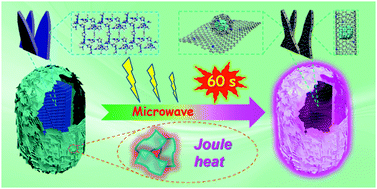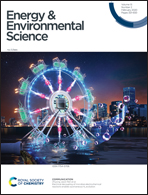Rapid and energy-efficient microwave pyrolysis for high-yield production of highly-active bifunctional electrocatalysts for water splitting†
Abstract
Functional materials with tuned nanostructure derived from metal–organic frameworks (MOF) hold great promise in energy storage/conversion and catalysis. Herein, we report a novel strategy to fabricate carbon fiber (CF)-supported cobalt nanocatalysts (Co-NC/CF) by a self-made “microreactor” consisted of randomly stacked graphene powder with the help of the microwave field. This newly-developed methodology can not only lead to a significantly enhanced yield of MOF-derived Co-NC up to 48.7 wt%, but also dramatically reduce the pyrolysis time (in just 60 s) and energy consumption (only 0.37% of traditional pyrolysis method). The experimental results combined with theoretical calculations revealed that the synthesized Co-NC/CF with optimized surface binding capability for reaction intermediates featured high-efficient catalytic activities for OER and HER owing to the electron transfer from cobalt to the surface carbon layers. The present microwave pyrolysis technique with an ultra-short synthesis cycle, high product yield and excellent energy efficiency, also demonstrated broad applicability for the synthesis of other MOF-derived functional materials.



 Please wait while we load your content...
Please wait while we load your content...